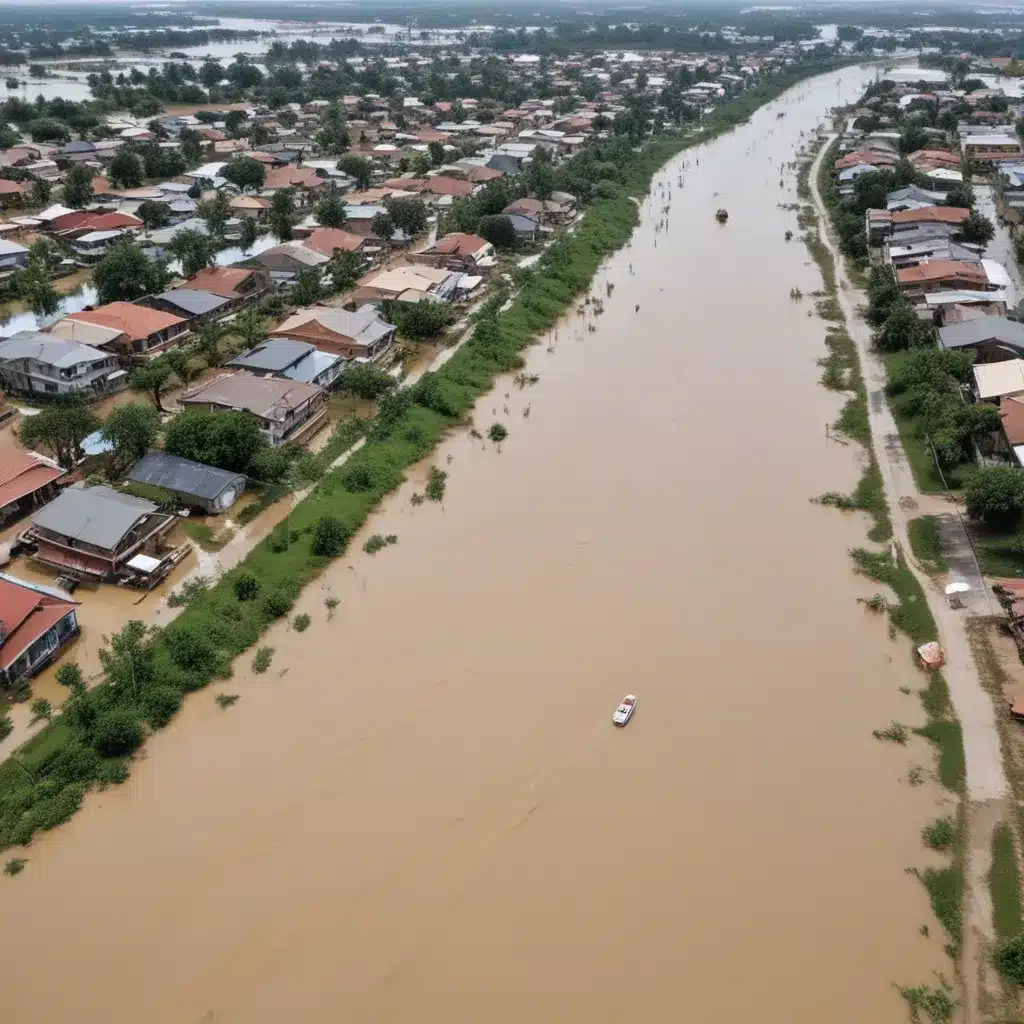
As an experienced flood control specialist, I’ve seen firsthand how effective infrastructure can make the difference between communities that thrive and those that struggle in the face of persistent flood risks. Across the world, coastal regions are bearing the brunt of climate change, with rising seas, intensifying storm surges, and unpredictable rainfall patterns threatening critical services and hard-won development gains.
Nowhere is this more apparent than in Bangladesh’s vulnerable coastal zone, where 35 million people face the devastating impacts of flooding, erosion, and cyclones each year. By taking a close look at the intersection of climate hazards, infrastructure resilience, and sustainable development goals in this dynamic region, we can uncover valuable insights to guide investment decisions and policies that build true flood resilience.
Flood Risk Assessment
Effective flood risk management begins with robust data and analysis. High-resolution mapping of flood hazards – including coastal and riverine flooding, as well as erosion and cyclonic winds – is essential for understanding the scale and spatial distribution of threats. Our team leveraged a range of datasets, from global flood models to locally-validated erosion maps, to create a comprehensive picture of the climate risks facing Bangladesh’s coastal infrastructure.
Overlaying this hazard data with detailed information on the locations and service areas of key assets like power substations, healthcare facilities, and schools, we were able to assess the vulnerability and exposure of households across the region. This revealed that all 8.2 million coastal households face some level of disruption to essential services due to climate hazards. Coastal flooding alone is expected to impact 39.5% of the population, while cyclones could disrupt a staggering 94.5% of the coastal zone.
Crucially, our analysis also showed that the poorest communities are disproportionately threatened, with statistically significant “poverty biases” observed in over two-thirds of the region’s subdistricts. This means that access to critical infrastructure like healthcare, education, and disaster shelters is more vulnerable for lower-income households – a burden that can perpetuate cycles of poverty and undermine sustainable development.
Flood Control Strategies
Confronting these complex, interconnected challenges requires a multi-faceted approach to flood resilience. Structural measures, such as levees, floodwalls, and retention basins, remain core components of flood control systems. However, their design might want to evolve to meet the demands of a changing climate. Rigorous hydraulic and geotechnical analyses, coupled with future flood projections, are essential for ensuring the long-term effectiveness and safety of these vital infrastructure assets.
Beyond “grey” engineering, nature-based solutions are gaining traction as a means of working with natural processes rather than against them. Green infrastructure, such as restored wetlands and permeable surfaces, can help slow the flow of floodwaters, reduce urban heat island effects, and provide co-benefits for biodiversity and community wellbeing. Integrating these approaches into holistic watershed management strategies is key for sustainable water management in flood-prone areas.
Complementing structural and ecological measures, non-structural interventions play a crucial role in building community resilience. Land use regulations, flood-proofing techniques, and managed retreat programs can reduce exposure and vulnerability, while early warning systems and coordinated emergency response plans save lives when the waters rise. Effective implementation of this diverse toolkit requires close collaboration between governments, engineers, planners, and local stakeholders.
Sustainable Water Management
Sustainable water management is a critical component of flood resilience, and it extends far beyond just controlling floodwaters. Stormwater management systems, designed to capture, store, and gradually release runoff, can alleviate urban flooding while recharging groundwater supplies and reducing the strain on wastewater treatment facilities.
Green infrastructure approaches, such as permeable pavements, bioswales, and constructed wetlands, harness natural processes to manage stormwater in an ecologically-sensitive manner. These nature-based solutions not only enhance flood control but also provide invaluable co-benefits, from improved water quality and groundwater recharge to habitat creation and urban cooling.
Equally important is the ecological stewardship of water resources. Protecting and restoring riparian zones, wetlands, and other natural features can enhance the capacity of these systems to absorb and retain floodwaters, while also preserving critical habitats and ecosystem services. Adopting an integrated, watershed-scale perspective is essential for managing the complex interactions between the built and natural environments.
Emergency Flood Response
When floods do occur, having robust emergency preparedness and response systems in place can make all the difference. Early warning systems, coupled with clear evacuation procedures and disaster response coordination, are vital for safeguarding vulnerable populations and minimizing the loss of life and property.
Equally important is the ability to quickly assess damage, prioritize recovery efforts, and support long-term community resilience in the aftermath of a flood event. Post-flood rehabilitation of critical infrastructure, combined with targeted initiatives to strengthen social networks and economic opportunities, can help break the cycle of repeated disasters and chronic underdevelopment.
Climate Change Adaptation
As the impacts of climate change intensify, the need for forward-looking, adaptive approaches to flood management becomes increasingly urgent. Sophisticated hydrological modeling and scenario planning can help us understand how flood risks may evolve in the coming decades, informing the design and placement of infrastructure to withstand these future threats.
Flexible and modular infrastructure designs, which can be easily modified or expanded as conditions change, offer a promising path forward. Coupling these innovative engineering solutions with nature-based approaches, such as restored floodplains and coastal wetlands, can create integrated systems that are both environmentally sustainable and resilient to the uncertainties of climate change.
Ultimately, building flood-resilient infrastructure is not just about protecting physical assets – it’s about safeguarding the progress we’ve made towards the Sustainable Development Goals and ensuring that the most vulnerable communities can thrive in the face of a changing climate. By taking a holistic, data-driven approach that prioritizes equity and long-term sustainability, we can unlock the true potential of flood-resilient infrastructure to transform lives and secure a more prosperous future for all.
Tip: Implement real-time monitoring to swiftly respond to flood risks















